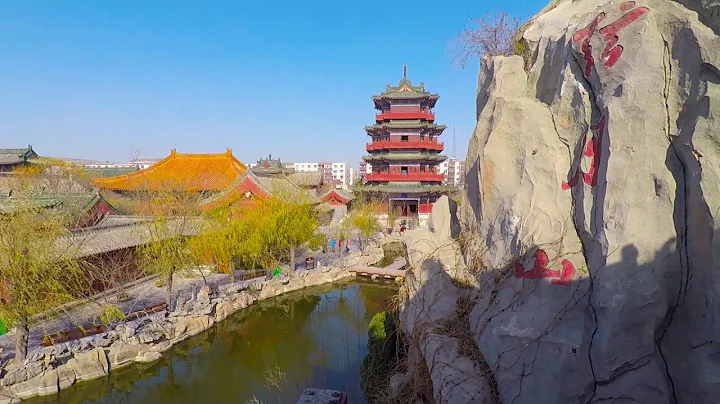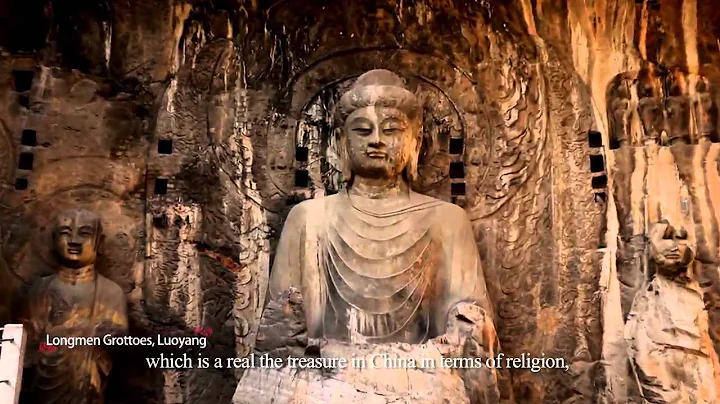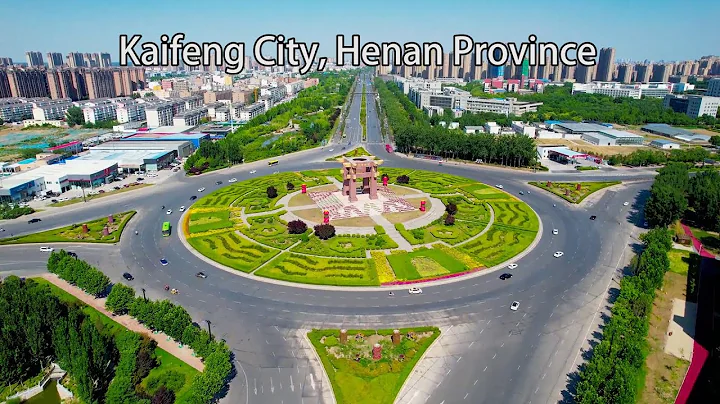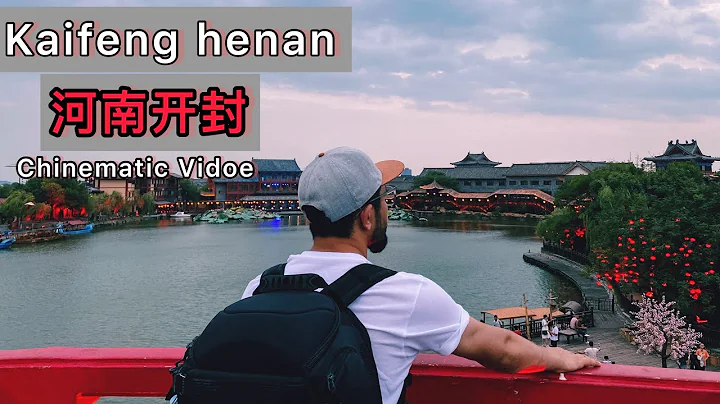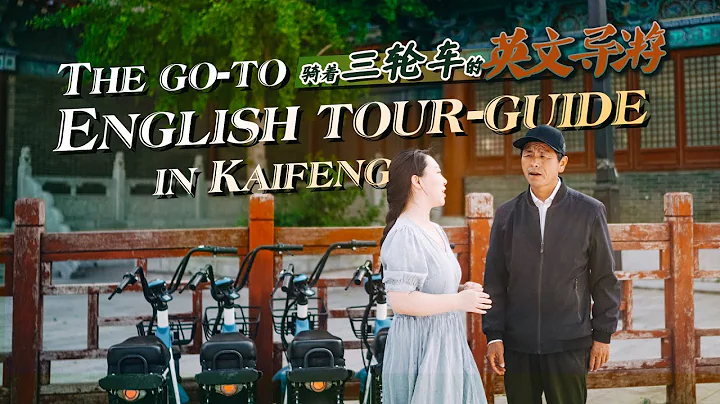In October 1910, a Chinese photographer named Zhou Yutai came to Kaifeng, Henan Province with his employer Freer, and used his camera to record the famous monuments in this thousand-year-old capital.
previously introduced Xiangguo Temple, Youguo Temple and Iron Tower in Kaifeng to you. Today we will continue to share with you the Wolong Temple, Erzeng Temple, Dragon Pavilion and Fan Pagoda in Kaifeng. Some monuments have been preserved to this day, while others have long been destroyed. We can only see their true appearance 112 years ago in old photos.

The mountain gate of Wolong Palace
The mountain gate of Wolong Palace is a traditional temple building. There is a straight blue brick road in front of the door. There are round windows on both sides of the door. A group of local children gathered in front of the door. An old lady with small feet stood in front of the house on the side of the main building.

The courtyard of Wolong Palace
Wolong Palace was originally called Wulong Palace. It is said that Zhao Kuangyin was chased by soldiers and hid in the palace and lay behind the statue of Emperor Xuan to escape. According to this legend, later generations built a lying statue of Zhao Kuangyin behind the statue of Emperor Xuan, and the name Wolong Palace came from this.

West Wing
The former site of Wolong Palace is located on Wolong Street in Kaifeng. From the photos, you can see that it is a typical courtyard building with flowers and plants planted in the courtyard. The building in the picture is the wing on the west side of the main hall. On the left side of the picture you can see an old tree with a strange shape.

East wing room
The symmetrical east wing room has complete doors and windows. An old man is lying half-lying in front of the door, seemingly enjoying the cool air. Combined with the previous pictures, it can be judged that there are no Taoist priests in Wolong Palace at this time, and it has become a compound where common people live. In 1927, Feng Yuxiang renovated Wolong Street and opened the small south gate, and Wolong Palace was subsequently demolished.

Er Zeng Temple
Er Zeng Temple was built in the 19th year of Guangxu (1893). It was built to commemorate the great scholar of Wuyingdian Zeng Guofan and his ninth brother, the governor of Liangjiang Zeng Guoquan. The builder was Xu Zhenwei, the then governor of Donghe Road. , Zeng Guofan was once his mentor in the examination in his hometown. The Erzeng Temple is located on the Panjia Lake side in front of Longting.

The courtyard of Er Zeng Temple
Er Zeng Temple is a grand building complex with two courtyards in the east and west. In the east is the three-entry courtyard , and in the west is "two courtyards and one garden", namely the Peanxiang Pavilion Courtyard, the Huanfeng Pavilion Courtyard and the West Garden.

Panxiang Tower
Panxiang Tower in the west courtyard is a palace-style double-ridged building with unique shape and grand momentum. It is surrounded by corridors on three sides, and you can lean on the railings to watch the scenery on the water.

Huanfeng Pavilion
Huanfeng Pavilion is not far from Peanxiang Tower. It is supported by sixteen red lacquered wooden pillars, surrounded by corridors, and has an exquisite and elegant shape. There is a wooden bridge leading to the pavilion in the center of the lake.

Huxin Pavilion
At that time, there were two Huxin Pavilions in Erzeng Temple. The east one was a double pavilion, called Diebo Pavilion, and the west one was a single pavilion, called Guanglu Pavilion. The picture shows the Guanglu Pavilion at that time. Part of the wooden bridge deck leading to the pavilion collapsed due to decay. The Erzeng Temple was later changed to the Henan Library and was demolished in the 1970s.

Longting Zhenwu Hall
The Longting in Kaifeng in 1910. The building in front of it was the Zhenwu Hall, and a large iron incense burner was placed in front of the hall. You can reach the palace along fifteen stone steps. From the picture, it can be seen that Zhenwu Hall is quite dilapidated. Not only the windows of the main hall are broken, but the east and west verandahs are also damaged to varying degrees.

Long Pavilion three years ago
This is a photo taken by Frenchman Edouard Chavan in front of Long Pavilion in 1907. The angle is basically the same as the previous photo. By comparing the two photos, we can see this more clearly An ancient building has changed over the years.

Longting Hall
After Zhenwu Hall, there is a wide forty-seven stone steps leading to Longting Hall. The main hall is a building with yellow glazed tiles and double eaves. It is nine rooms wide and surrounded by verandas. The stone steps leading to the main hall are covered with green grass, indicating that there are very few people visiting this place on weekdays.

Terrace railing
The stone guardrail surrounding Longting Hall, a Taoist priest is leaning on the railing and looking in the direction of the photographer.

Longting distant view
Looking northeast from the Longting main hall, the towering iron tower appears at the other end of the sky. Some damaged stone railings and flower walls can be seen in the close shot.

Shimen
The stone gate on the east side of Longting has an archway-like structure, simple and heavy. Through the gate, you can see the sparkling Panjia Lake and the residential buildings on the other side.

Fan Pagoda
The Fan (pó) Pagoda located in the southeast of Kaifeng was built in the seventh year of Kaibao in the Northern Song Dynasty (974). It has a history of more than 1,000 years. It is the first pagoda built in Kaifeng and also One of the oldest buildings in the area.

Fan Pagoda interior view
Fan Pagoda has a unique shape. The inside and outside of the tower are covered with statue bricks. The figures on it have different expressions and the carvings are exquisite and breathtaking.

The altar in Fan Pagoda
Fan Pagoda is located on the Fan platform in Tianqing Temple . In its prosperous period, it covered an area of dozens of acres and had hundreds of monks. The picture shows the altar in front of the Buddha statue in the Fan Pagoda. The candle stand and incense burner placed on it are all rusty, indicating that they have not been maintained for a long time.

Yuwang Terrace
Yuwang Terrace, also known as ancient blowing platform. According to legend, in the Spring and Autumn Period, Jin Kingdom great musician Shi Kuang played music here. This is a rather huge ancient building complex. There are buildings such as King Yu Temple, Sanxian Temple, Shuide Temple and Yushu Tower.
Previous sharing: In Kaifeng, Henan in 1910, the Xiangguo Temple and the dilapidated Youguo Temple were in a mess


